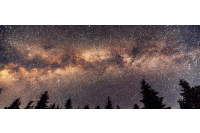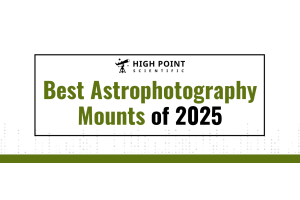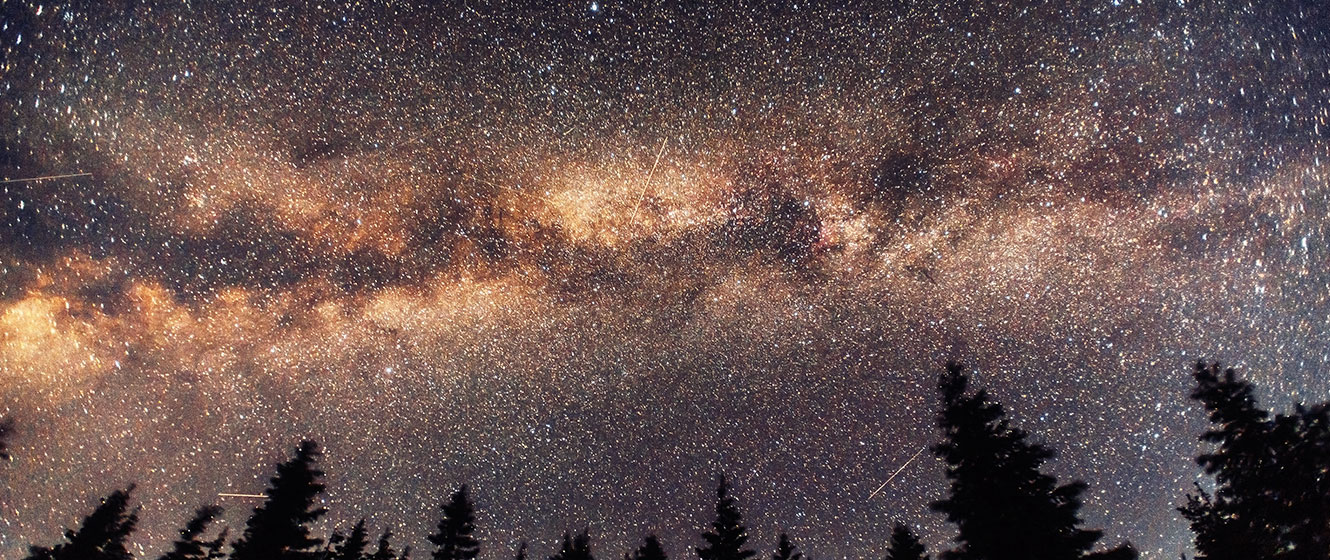
While almost everyone has seen a shooting star, not everyone knows much about them. What are they? Where do they come from? Are they purely random or can you predict when they might appear? What are the best meteor showers this year?
Meteor Showers 101: The Basics
The ancient Greeks thought shooting stars were an atmospheric phenomenon, and, arguably, they weren’t completely wrong. Technically known as a meteor, a shooting star is a tiny fragment of rock or dirt, no larger than a small stone, that enters the Earth’s atmosphere from space. Moving at a speed of 72 km/sec (45 miles/sec), friction causes the fragment to heat up, causing it to burn its way through the air as it falls toward the Earth. We see the meteor shooting across the sky as a result.
In theory, you could see a shooting star on any clear night. A staggering 25 million meteors enter the Earth’s atmosphere every day, with the vast majority being no larger than a particle of dust or grain of sand.
Meteors can be thought of as “space dust” and could have a number of different sources. Some could be interstellar dust or the remnants of material leftover from the formation of the solar system. Others could be tiny chunks of the Moon or Mars, blasted away from those worlds by meteorites striking their surfaces. (Incidentally, a meteorite is simply a meteor that survives burning through the atmosphere and hits the ground.)
A meteor shower is a little different. These are particles of dust and rock left behind by asteroids and comets as they orbit the Sun. As the Earth moves through space, it passes through the debris and we see far more shooting stars than normal - hence, a meteor shower.
Showers are named after the area of sky they appear to originate from and the name is almost always derived from the name of a constellation or the nearest star. For example, the Leonds are named after the constellation Leo, while the Eta Aquariids are named for the star Eta Aquarii, in the constellation of Aquarius. More generally, this area is known as the radian
For example, the famous Perseid meteor shower is named for the constellation of Perseus, the Hero, while it’s radiant lies close to the stars Eta and Gamma Persei.
There’s another key term you’ll often hear when discussing meteor showers: the Zenith Hourly Rate (ZHR).
This is the theoretical number of meteors you could see every hour, under ideal conditions, and with the radiant directly overhead (at the zenith.) Unfortunately, this doesn’t often happen, as the radiants of most showers don’t pass overhead during the darkest hours of the night
To return to our example, the Perseids have a zenith hourly rate of about 100, but realistically most of us will probably see about twenty. That being said, if you’re under clear, dark rural skies, far from the lights of a town or city, that number could increase to fifty.
On average, the major showers have a zenith hourly rate of about 40, but there are three (the Quadrantids, Perseids and Geminids) that can regularly peak at over 100 and it’s these showers that will draw the most attention.
You may also hear astronomers talking about a bright meteor leaving a train or trail in its wake. This is a trail of glowing dust left behind by a meteor as it burns up in the atmosphere. Many trains will typically last a few seconds or less, while others can last several minutes.
Lastly, meteor showers don’t last just a single night. Most will last for several weeks and they all have a maximum or peak date. As we approach the date of maximum, you’ll start to see more meteors and then, conversely, on the days following the maximum, you’ll see less.
Observing a Meteor Shower
There are a few things to remember if you’re planning a trip or intend to be outside for a few hours:
- Get away from the lights of any town or city. Just as the Moon brightens the sky, so does the light from nearby buildings. Called light pollution, it’s becoming a serious threat to all aspects of astronomy.
- Let your eyes adjust to the dark. It takes about 90 minutes for the sky to become dark after sunset, and at least 20 minutes for your eyes to properly become dark adapted.
- Wrap up with layers. Even during the summer, it can get cold at night, especially during the early hours of the morning when most meteors can be seen.
- Bring a folding, reclining chair or sun lounger. This will allow you to comfortably look up at the sky without having to strain your neck.
- You don’t need equipment to see meteors, but bring binoculars if you have them. That way you can observe the night sky or take a closer look at any trails left by a fireball.
Also, before going anywhere or planning anything, check the phase of the Moon. Moonlight can brighten the sky quite substantially; the fuller the Moon, the more the sky is brightened. So, close to full Moon, you’ll see fewer stars in the sky and, similarly, you’ll see fewer shooting stars. The fainter meteors simply won’t be bright enough to be visible against the background sky.
The monthly overview below provides information about the phase of the Moon when the shower is at its peak. Although there are many active showers throughout the year, we’ve chosen to focus on those showers that produce a reasonable number of meteors.
Many of these are best seen after midnight, because, in many cases, that’s when the shower’s radiant is rising above the horizon. However, you could see a higher than average number of meteors earlier in the evening too, so it’s always worth having a look, even if you can’t stay out too late!
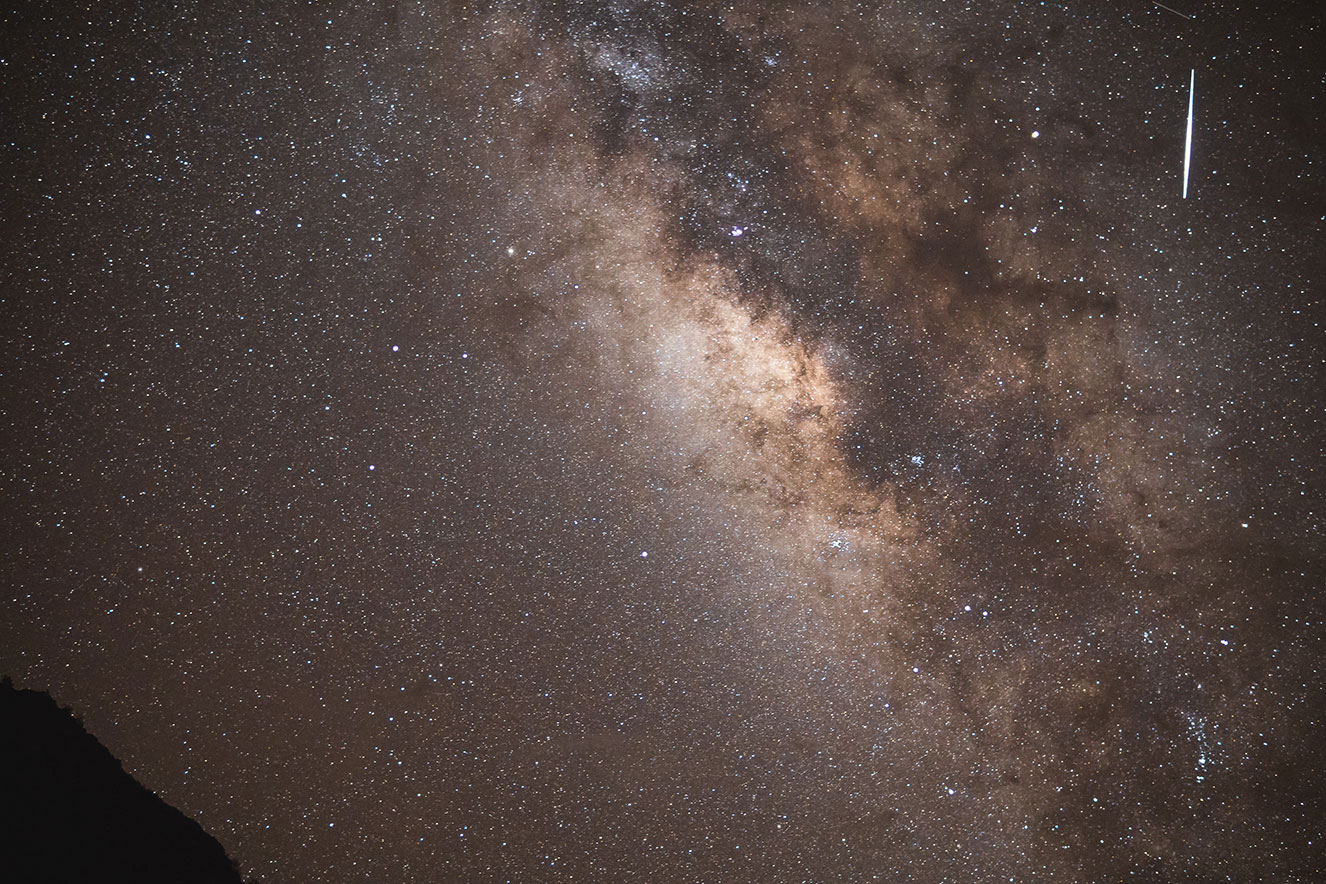
Brandon Naito
August
August brings us the Perseids, one of the most famous showers of them all. While not the brightest, they’re known to be one of the most consistent showers; this, combined with the warm, summer weather of the northern hemisphere, makes this an ideal choice for beginners and more experienced observers alike.
This year, the Moon is at last quarter, but shouldn’t rise until a few hours before sunrise. While this is normally the best time to spot meteors, the shower’s radiant rises before midnight, giving observers about three or four hours to see some good shooting stars. Under ideal conditions, the zenith hourly rate is about 100, but most of us can expect to see about 20-30 shooting stars under dark skies.
In comparison, the Aurigids, a minor shower, might seem a little lackluster. They reach their peak on the last two days of the month, and while the shower has a zenith hourly rate of about 6, realistically you can probably expect to see just one or two. Once again, the Moon is a waxing gibbous, and the early hours of the morning will provide you with the best opportunity to catch a few.
Perseids
Active: Jul 17th - Sep 1st
Maximum: Aug 11th - Aug 12th
Time: 04:00
Moon: Last Quarter
ZHR: 100
Parent Object: 109P/Swift-Tuttle (Comet)
Radiant: 03:13h +58.1°
Brightness: Medium
Speed: Fast
Aurigids
Active: Aug 18th - Sep 7th
Maximum: Aug 30th - Aug 31st
Time: 04:00
Moon: Waxing Gibbous
ZHR: 6
Parent Object: C/1911 N1 (Comet Kiess)
Radiant: 06:04h +38.6°
Brightness: Medium
Speed: Fast
September
After an active summer season, things begin to slow down in September, with only one shower worth mentioning. The September Epsilon Perseids is a minor shower, with a maximum of only about 5 meteors an hour, under ideal conditions. Unfortunately, with a last quarter Moon shining when the shower is at its best, even those might be difficult to come by. All is not lost, however; according to the International Meteor Organization, there’s a chance of some heightened activity this year.
September Epsilon Perseids
Active: Sep 3rd - Oct 3rd
Maximum: Sep 9th - Sep 10th
Time: 05:00
Moon: Last Quarter
ZHR: 5
Parent Object: Unknown
Radiant: 03:15h +39.7°
Brightness: Medium
Speed: Fast
October
The last quarter of the year is very active and it starts with the Draconids. This shower has a very short period of activity and reaches its maximum on the 8th. Fortunately, as Draco is a circumpolar constellation in the northern hemisphere, this is a shower that can be enjoyed during the evening hours before midnight. It’s also an unpredictable shower; on average, it’s been known to produce about 20 meteors an hour, but it’s been known to have sudden, unexpected outbursts.
The Orionids are one of two showers that originate from, arguably, the most famous comet of them all - Halley. The Orionids are a major shower and are expected to produce at least 20 meteors an hour, but like the Draconids, they can be a little unpredictable. We could get lucky this year; besides a first quarter Moon that will set before the radiant rises, it’s thought the shower could be about to start a phase of higher activity that could last for the next few years. These bright and fast meteors could be well worth getting up early for!
Draconids
Active: Oct 8th - Oct 9th
Maximum: Oct 8th
Time: 18:00
Moon: Last Quarter
ZHR: Variable
Parent Object: 21P/Giacobini-Zinner (Comet)
Radiant: 17:32h +56.0°
Brightness: Medium
Speed: Slow
Orionids
Active: Sep 23rd - Nov 27th
Maximum: Oct 21st - Oct 22nd
Time: 05:00
Moon: First Quarter
ZHR: 23
Parent Object: 1P/Halley (Comet)
Radiant: 06:24h +15.7°
Brightness: Bright
Speed: Fast
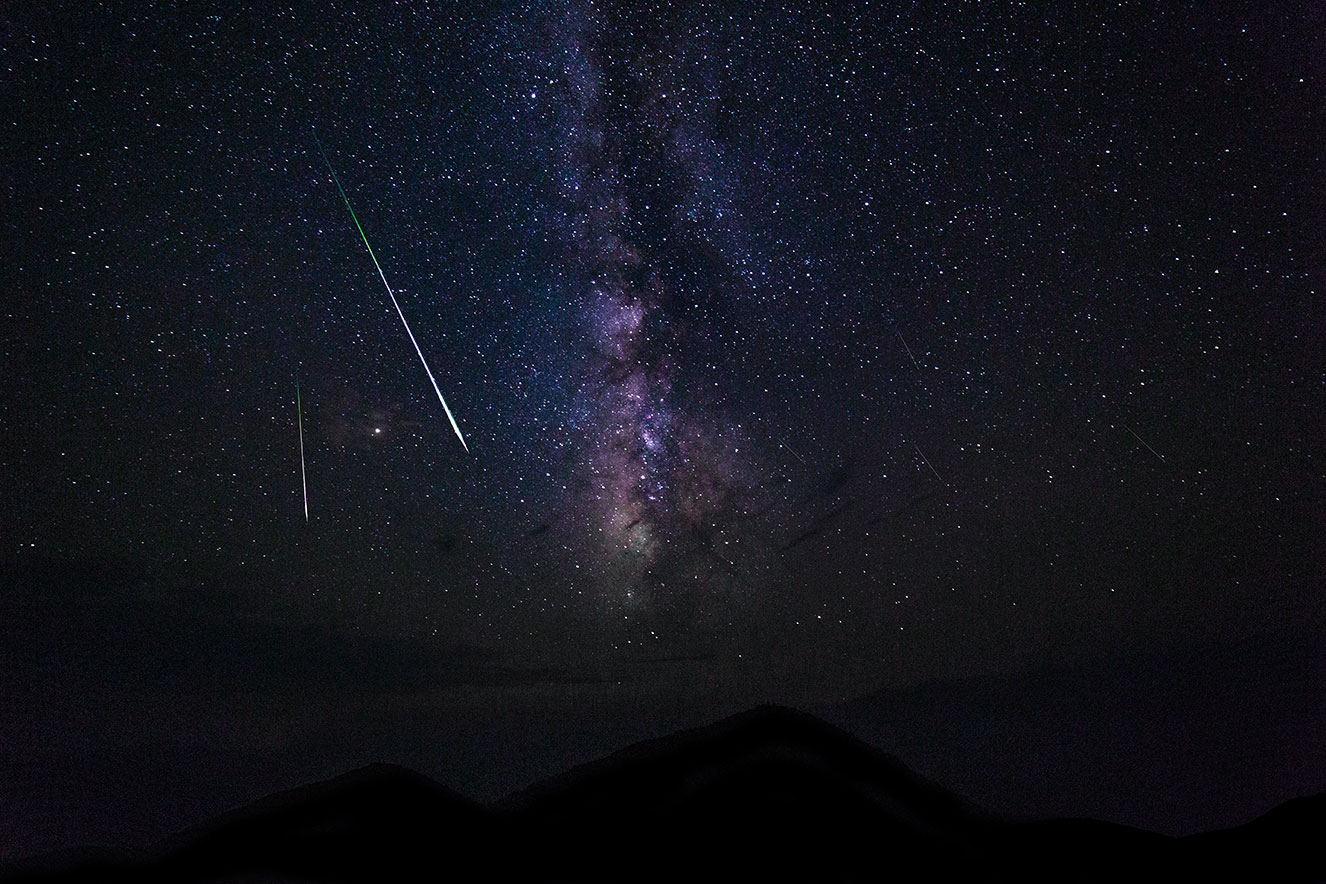
Austin Human
November
November’s first shower of note is the Northern Taurids. A minor shower, you can only expect to see 5 an hour under ideal conditions, and while these meteors are slow and bright, the waning gibbous Moon could cause some interference.
The Leonids are a major shower that sprang to fame in 1999 when it experienced a stunning outburst of some 3,000 meteors an hour. Also known as a meteor storm, the Leonids undergo these events roughly once every 33 years, when its parent comet, Encke, makes its regular return to the inner solar system. No such storm is expected this year, but with the waxing crescent Moon setting early, there’s still a very good chance of seeing more than a few shooting stars in the early morning hours.
Northern Taurids
Active: Oct 24th - Dec 19th
Maximum: Nov 2nd - Nov 3rd
Time: 00:00
Moon: Waning Gibbous
ZHR: 5
Parent Object: 2P/Encke (Comet)
Radiant: 03:16h +20.7°
Brightness: Bright
Speed: Slow
Leonids
Active: Nov 2nd - Nov 30th
Maximum: Nov 18th - Nov 19th
Time: 05:00
Moon: Waxing Crescent
ZHR: 15
Parent Object: 55P/Tempel-Tuttle (Comet)
Radiant: 10:15h +21.8°
Brightness: Bright
Speed: Fast
December
The penultimate major shower of the year is one of the best, and this year promises a good show. Under ideal conditions, the Geminids usually produce about 120 meteors an hour, but in recent years that number has seen an increase closer to 150. This year offers an outstanding opportunity to enjoy the shower at its best. Not only the Moon is new, but the constellation of Gemini itself rises early in the evening and is visible throughout the entire night, greatly improving your chances of seeing a few shooting stars.
Our last shower of the year, the Ursids, is also a major shower but, unfortunately, not on the scale of the Geminids. These meteors appear to originate from the constellation of Ursa Minor, which, of course, is also home to Polaris, the Pole Star. That being the case, it’s visible throughout the night, but observers should wait until after the first quarter Moon has set before trying their luck. These meteors are faint and easy to miss.
Geminids
Active: Dec 1st - Dec 22nd
Maximum: Dec 13th - Dec 14th
Time: 01:00
Moon: New Moon
ZHR: 120
Parent Object: 3200 Phaethon (Asteroid)
Radiant: 07:33h +32.4°
Brightness: Medium
Speed: Medium
Ursids
Active: Dec 19th - Dec 24th
Maximum: Dec 21st - Dec 22nd
Time: 05:00
Moon: First Quarter
ZHR: 10
Parent Object: 8P/Tuttle (Comet)
Radiant: 14:40h +75.4°
Brightness: Faint
Speed: Medium
Sources:
International Meteor Organization 2020 Meteor Shower CalendarAmerican Meteor Society 2020 Meteor Shower List
American Meteor Society Meteor Shower Calendar 2020-2021
Wikipedia - List of Meteor Showers





